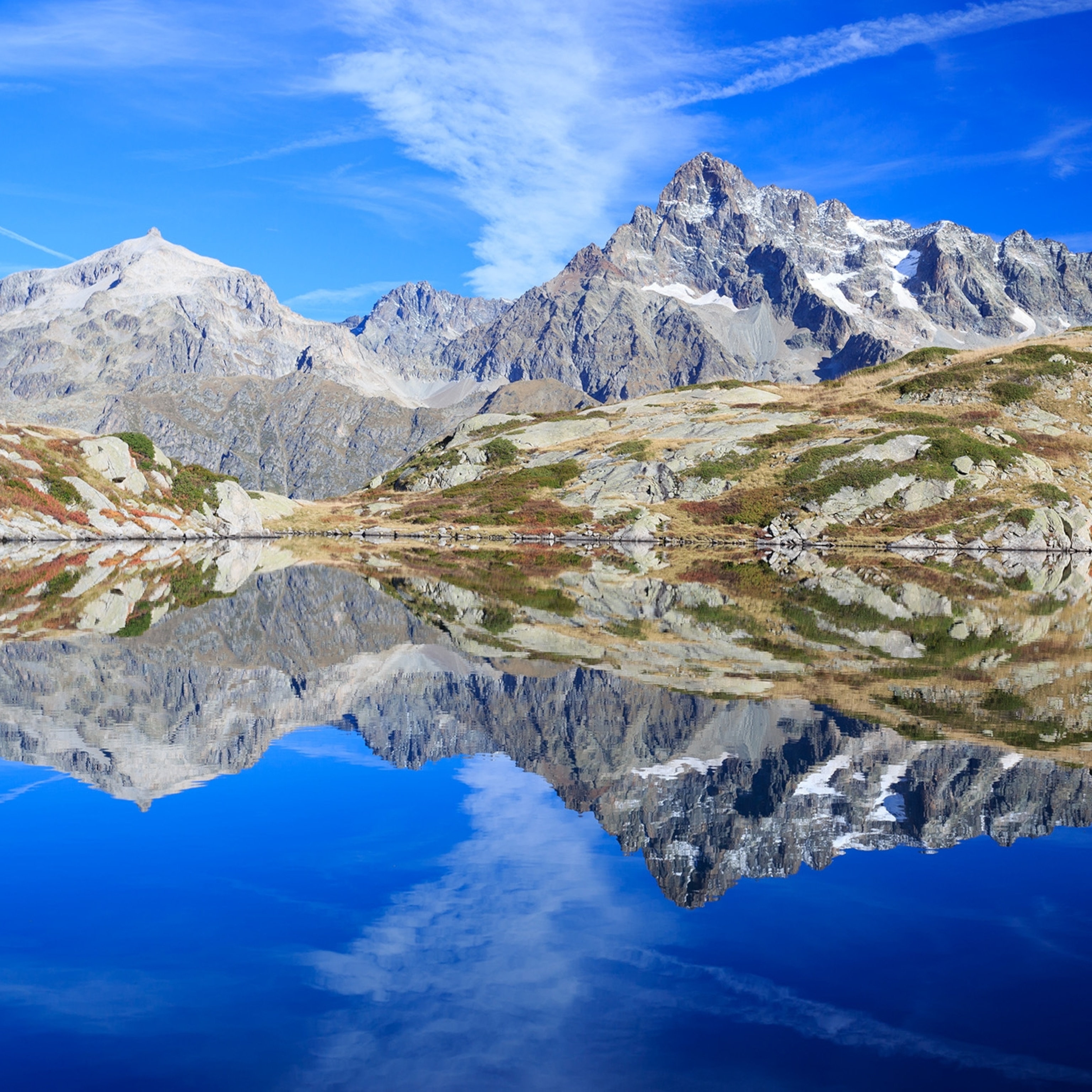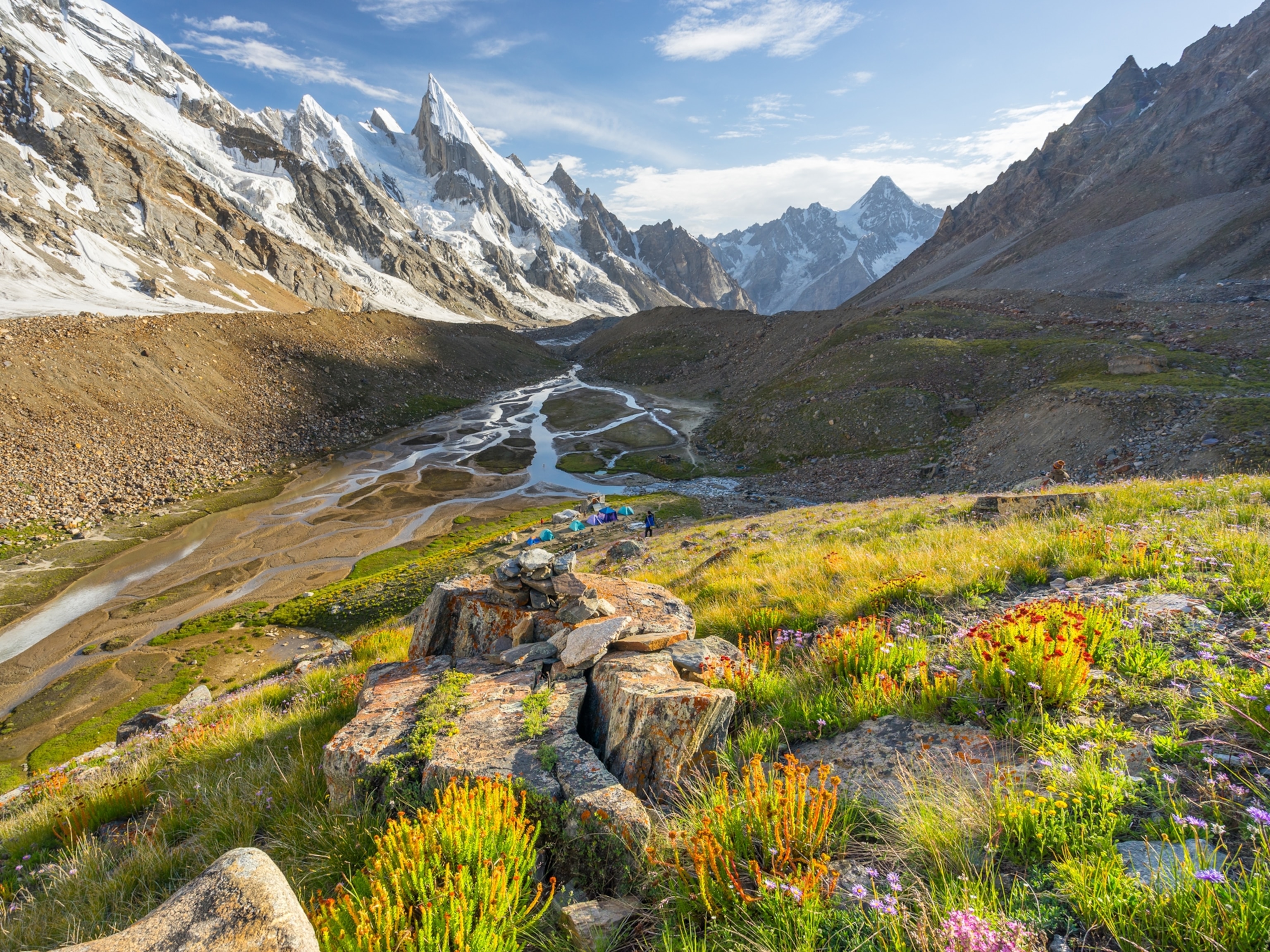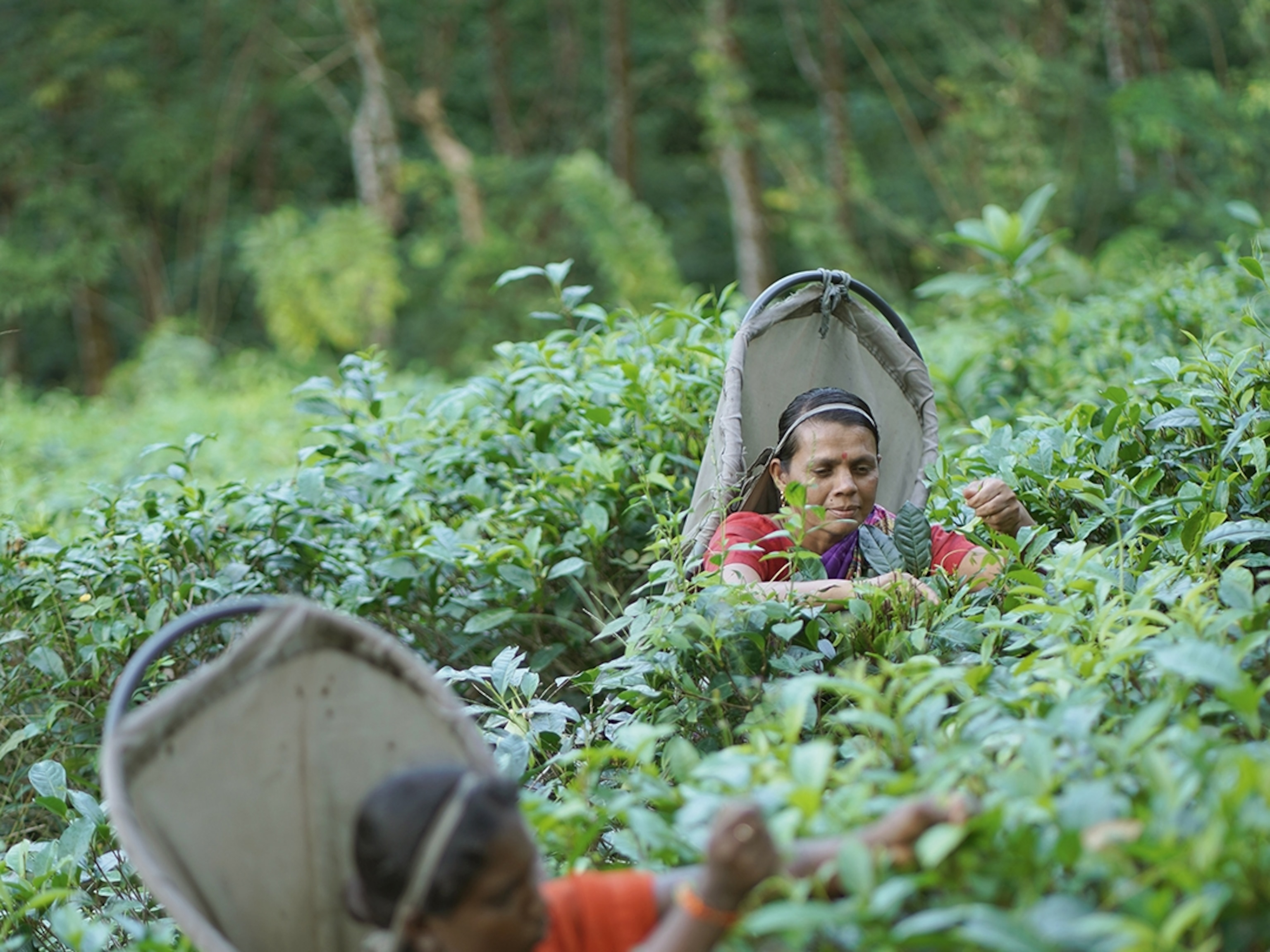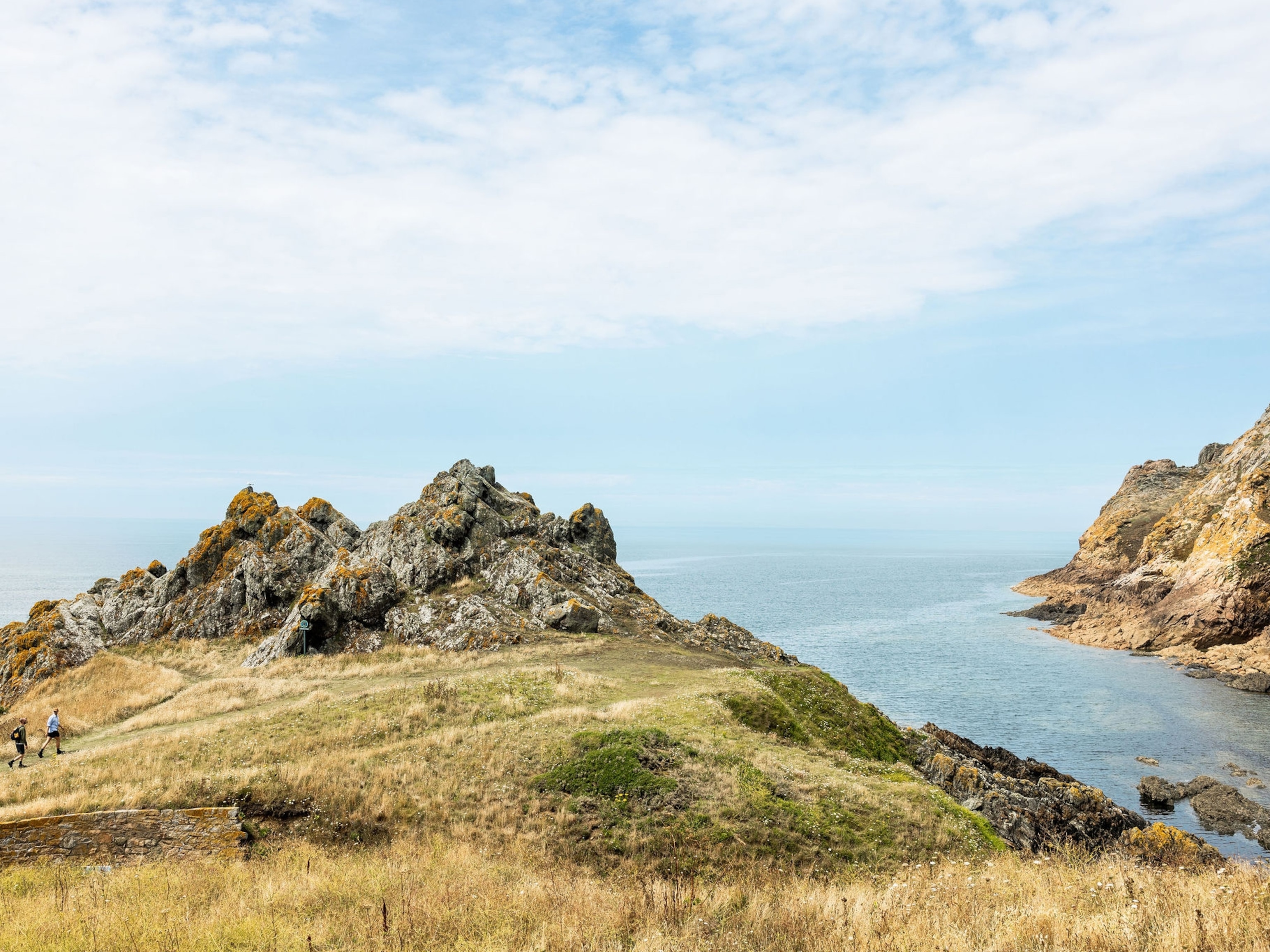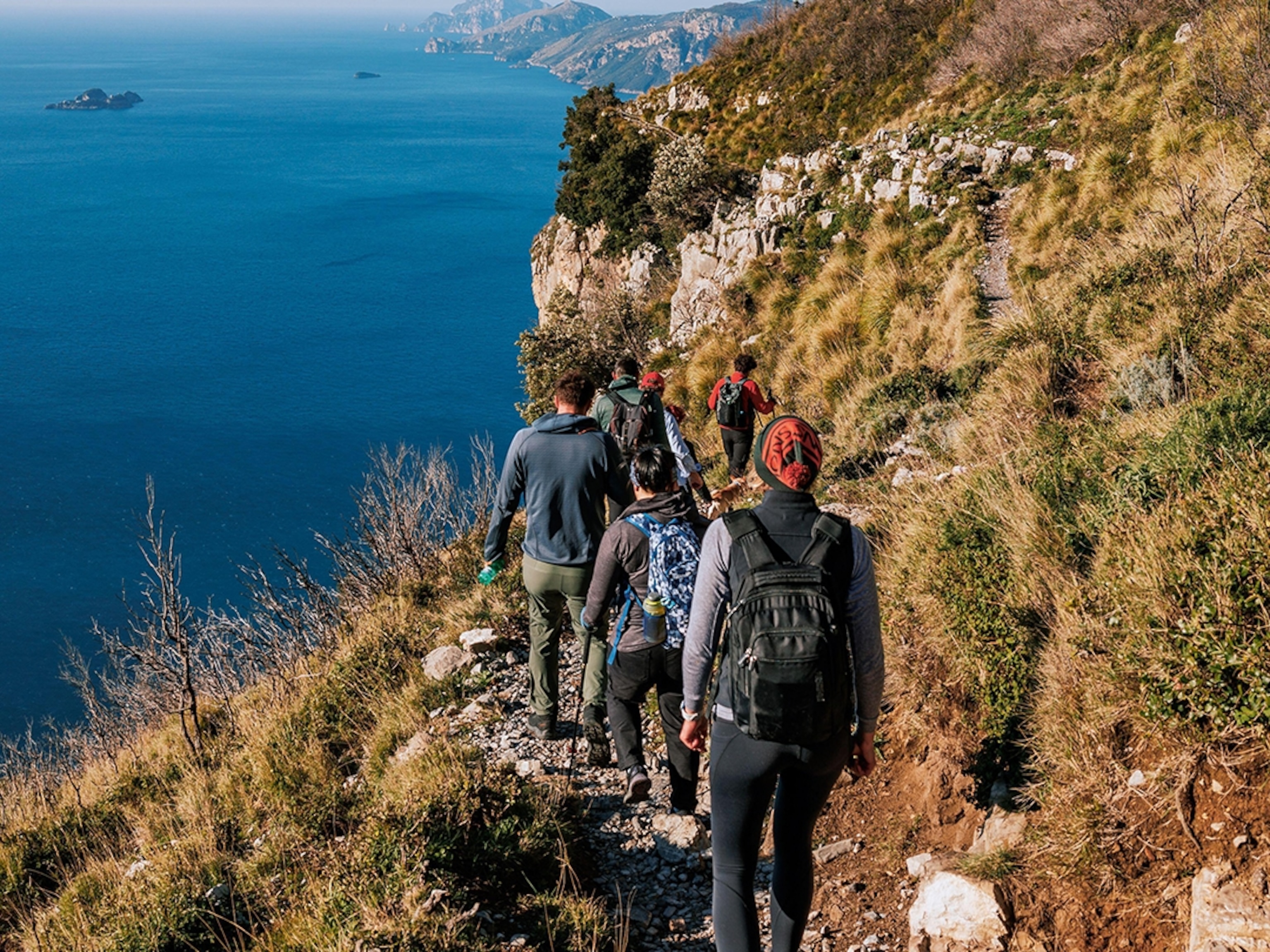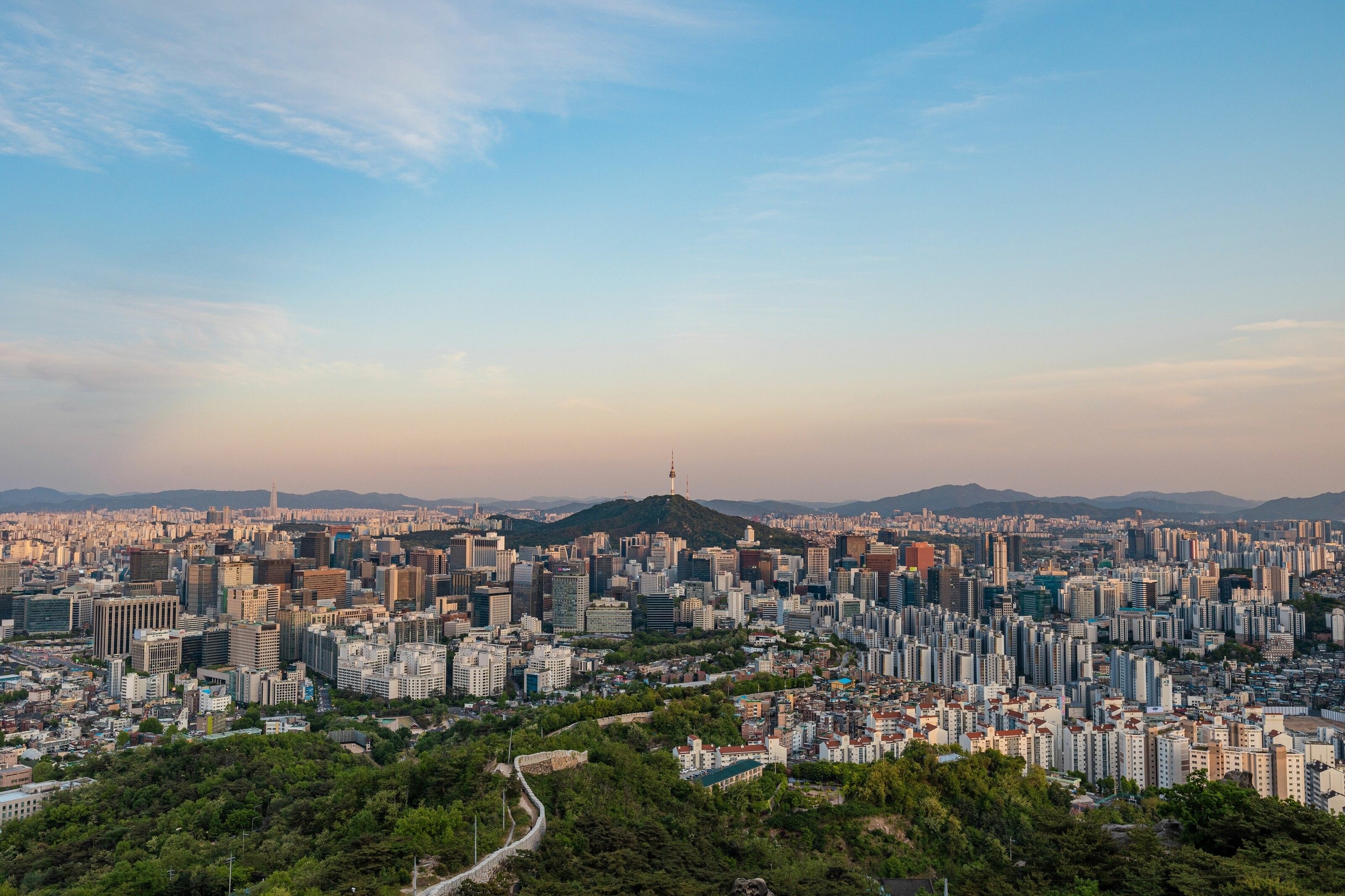
Six of the best hiking trails in Seoul
From leisurely walks to advanced climbs, we round up some of the South Korean capital’s most popular trekking routes.
Hiking is the national pastime in South Korea, a country where mountains cover 70% of the landscape. Seoul is no exception: despite being one of East Asia’s most exciting urban destinations, the capital is also a unique place to spend time in nature, with ancient peaks rising in the middle of its neon-lit streets. In the wake of the pandemic, hiking has experienced a renaissance of sorts in the city, and routes have been spruced up with new stairways, pavilions and observation platforms. What’s more, all of it is now easier to explore for every traveller looking to hit the trails thanks to a new hiking one-stop shop — the Seoul Hiking Tourism Center.
1. Bukhansan mountain Daedongmun Gate Trail
Not only is Bukhansan the capital’s highest mountain, but it’s also the only fully-fledged national park within the city limits of Seoul. Forming a natural wall on the northern edge of town, this stone massif can be accessed by myriad hiking paths. The Daedongmun Gate Trail is perhaps the easiest one, gently making its way up through the picturesque Jindallae Mountain Range, famous for its azaleas that bloom every April. From there, it continues to Daedongmun Gate, offering stunning views of Bukhansan’s three main peaks.
Distance: 4.35 miles
Where to start: This trail can be accessed from Bukhansan Ui Station
2. Bukhansan mountain Yeongbong Peak Trail
There’s a reason why Bukhansan is the most visited out of South Korea’s 22 national parks. It’s not only due to its location, within a city of 10 million people — the place is a natural wonder in its own right. An intermediate option, the Yeongbong Peak Trail is a wonderful way to get up on the mountain without the exertion required to scale the main peak, taking trekkers past Yongdeoksa Temple before climbing up Yukmojung Hill. From there, it’s a 40-minute hike to Yeongbong Peak, which affords breathtaking views of northern Seoul and the mountain surrounding it.
Distance: 5.34 miles
Where to start: The trail begins at Bukhansan Ui Station
3. Bukhansan mountain Baegundae Peak Trail
The trail up Baegundae peak, Bukhansan’s highest, is easily the most strenuous in the city. The higher you get, the steeper it becomes, with stone steps as well as a series of ropes tied to bolts in the granite to pull yourself up (sturdy hiking boots and hiking or work gloves are recommended). While the trail itself is pretty short, it’s a brutal climb straight up the face of the mountain — though the stunning panoramas are well worth the sweat. Baegundae can be crowded on weekends, so come on a weekday to have the trail to yourself.
Distance: 5.1 miles
Where to start: The trail begins at Bukhansan Ui Station and climbs steadily from there up Haroojae
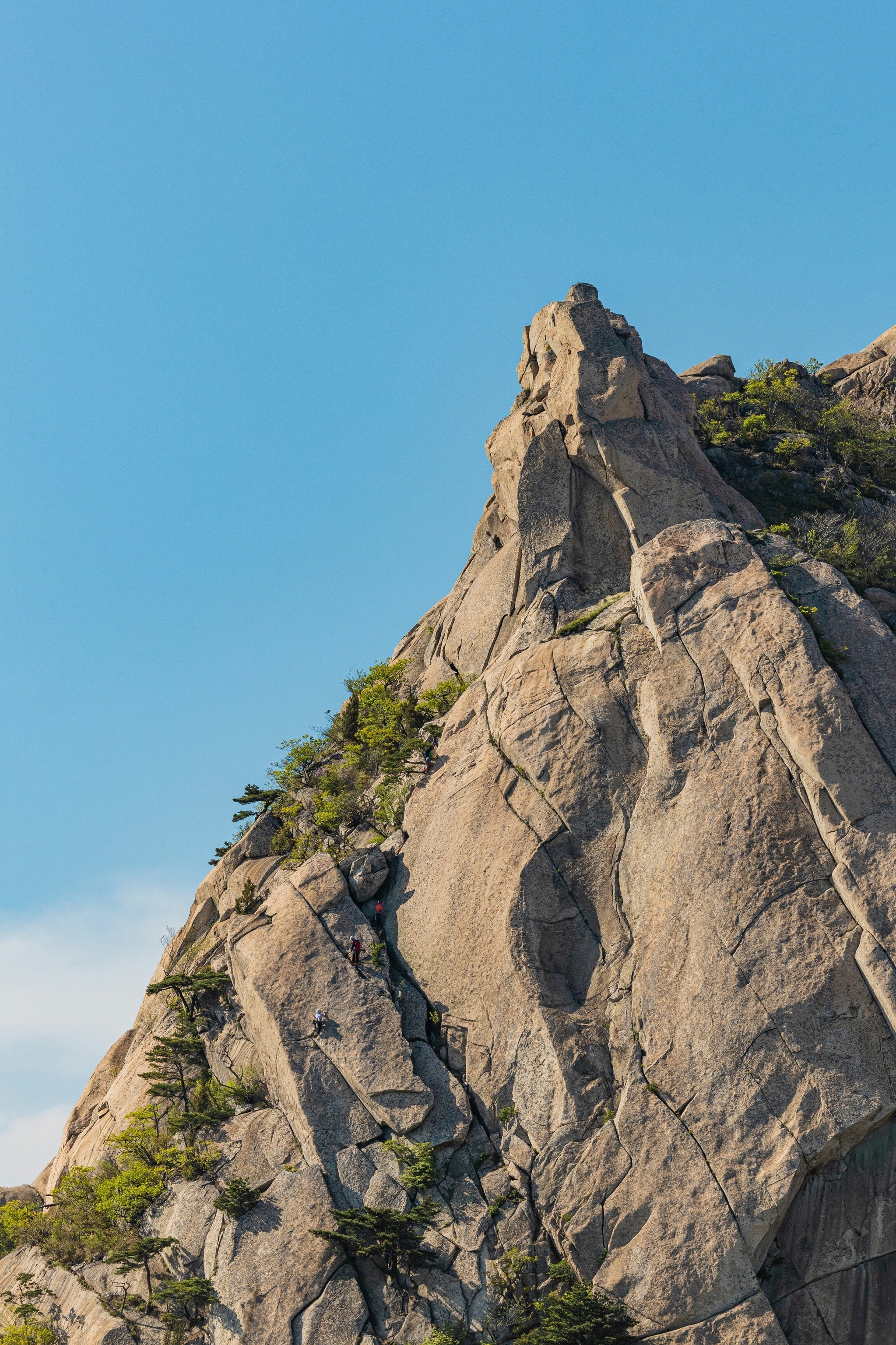
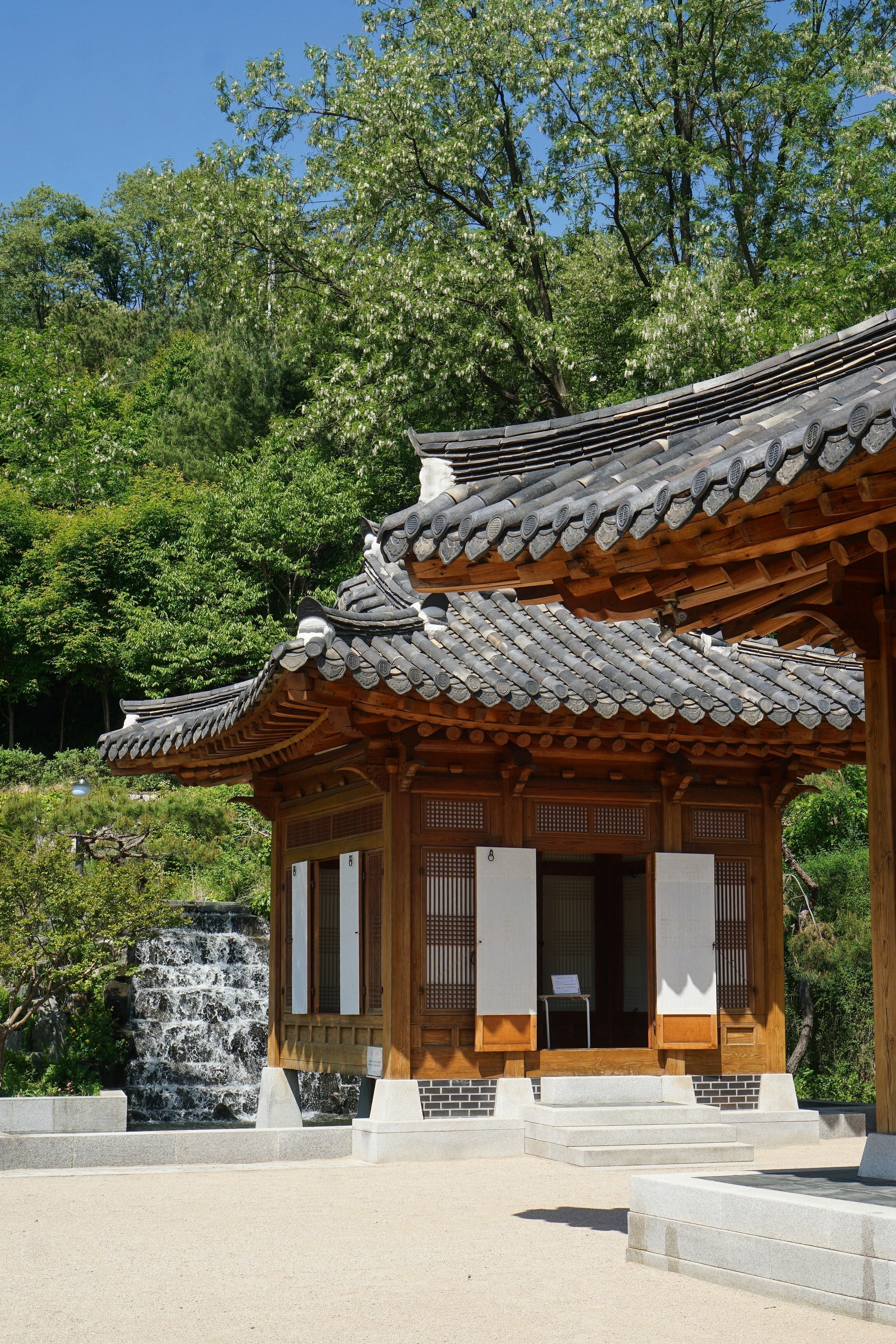
4. Inwangsan Mountain Trail
Rising in the middle of the city centre, Inwangsan Mountain is one of the capital’s most popular trails. This is largely due to the stunning night-time panoramas at its summit, which visitors can hike up to 24 hours a day, thanks to the trail’s relatively mild grade and safe construction (with the exception of Mondays, when it’s closed). At the top, enjoy views of the sparkling cityscape below, as well as of the Gyeongbokgung, a royal palace, and Cheongwadae, the previous presidential residence. The path follows the old Hanyangdoseong (Seoul City Wall) and passes by several intriguing stone formations, including Buchonimbawi (Buddha Rock), Gichabawi (Train Rock) and Haegolbawi (Skeleton Rock).
Distance: 1.93 miles
Where to start: The mountain trail can be accessed next to the Korean Science Museum, which is just a nine-minute walk from Dongnimmun Station
5. Bugaksan Mountain Southern Trail
Due to its proximity to Cheongwadae, much of Bugaksan Mountain was closed to the public until April 2022. But with the former presidential residence opening to visitors, hikers are now able to fully explore this once-forbidden piece of real estate, which, at 1,122 feet, is the highest of the capital’s four inner mountains (Inwangsan, Bugaksan, Namsan and Naksan). In 1968, North Korean commandos used the cover of Bugaksan to launch an attack on Cheongwadae; look out for a pine tree with bullet holes, which still stands as a testament to peninsula’s turbulent history. After reaching the summit, the trail continues along the ridge, following the Seoul City Wall past Sukjeongmun Gate.
Distance: 3.2 miles
Where to start: The path begins at Changuimun Gate and rises steeply over stone steps and stairways until the summit
6. Gwanaksan Mountain Trail
South of the Han River, Gwanaksan Mountain is famous for its harmonious blend of rock and verdant forest, as well as its hermitage nestled atop a sheer stone cliff. The most popular trail here starts at Seoul National University and follows a stream through deep forest before climbing to the mountain’s 2,064-foot summit. Trekkers can bask in the serenity of the Yeonjudae Hermitage before descending to the historic Gwacheon Hyanggyo Confucian School. Here, dive into rustic Korean fare such as pajeon (green onion pancake) or baeksuk (steamed chicken with ginseng), all washed down with a bowl or two of makgeolli (rice wine) at one of the several restaurants overlooking the stream.
Distance: 3.8 miles
Where to start: Reach the trailhead by taking bus 5513 or 5511 from Seoul National University Station

Seven tips to hike responsibly in Seoul
1. All the peaks in Seoul are accessible through the city’s state-of-the-art public transportation, so use subways and buses to arrive at the trailheads.
2. Do your best to support local businesses. There are independent cafes, restaurants and shops near all of the mountains.
3. Leave no trace behind. Make sure to bring a reusable water bottle, take any litter with you and don’t disturb the natural surroundings.
4. Prepare in advance, researching information on the area you plan to visit as well as precautions to avoid environmental damage or wildlife disruption. Information on the Bukhansan area and its hiking courses is available at the Seoul Hiking Tourism Center.
5. Be quiet on the trail and respect any wildlife you come across by keeping your distance. The ecosystems in the mountains of Seoul can be fragile, so make sure to stay on the established paths to avoid damaging the flora.
6. Make sure to have a map or navigation app downloaded on your phone. While Google Maps works well, Korea’s homegrown Naver Maps and KakaoMap tend to be a bit better for local hiking trails.
7. Have a translation program ready, such as Google Translate or Papago. While the city of Seoul is doing its best to increase the use of English, many placards and signs are still only in Korean.
Plan your trip
Korean Air and Asiana offer daily direct flights from Heathrow to Seoul’s Incheon Airport in around 12 hours.
At the new Seoul Hiking Tourism Centre, which opened its doors in June 2022, visitors can rent trekking boots and hiking clothes. A five-minute walk from Bukhansan Ui Station, the centre also offers lockers, showers and changing rooms. Reserve gear online: seoulhiking.or.kr
Subscribe to National Geographic Traveller (UK)
Follow us on social media
